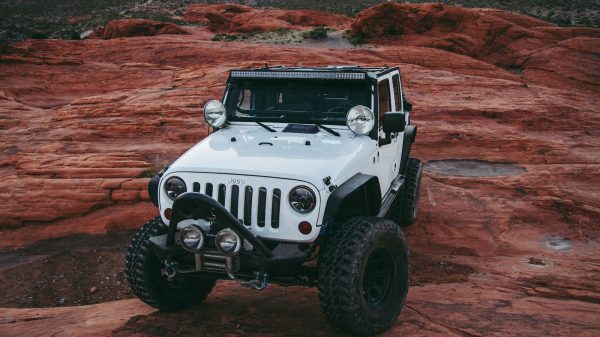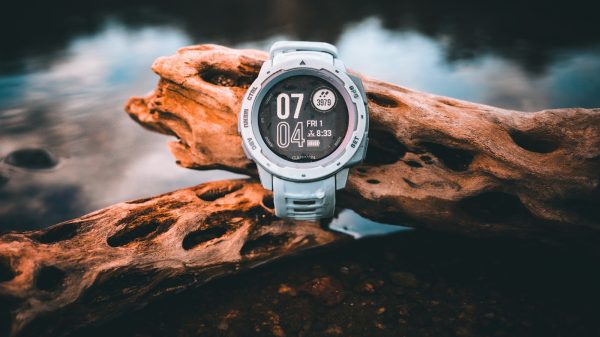Off-road enthusiasts often struggle to customize their vehicles for optimal performance and durability. Nearly 18 million vehicles are sold in the US each year, but many lack the rugged features needed for off-highway adventures.
Selecting Optimal Tires for Off-Road Adventures
Choosing the right tires for your off-road vehicle can make or break your adventure. Off-road tires come in three main categories: All-Terrain, Mud-Terrain, and Rugged-Terrain. Each type excels in different conditions, so picking the best fit depends on where you plan to explore.
All-Terrain tires offer a good balance for various surfaces, while Mud-Terrain tires shine in sticky situations with their deep grooves. For sandy escapades, tires with paddle-like treads help your ride float over dunes.
Avoid the long lines and shop online!
-> Shop the Best Deals on Amazon <-
As an Amazon Associate, we earn from qualifying purchases.
Surface-specific tires can dramatically improve your vehicle’s performance. Rock crawlers benefit from All-Terrain tires with sharp edges that grip uneven surfaces. If you’re tackling muddy trails, Mud-Terrain tires with aggressive tread patterns will give you the traction you need.
Larger tires not only look impressive but also provide practical benefits. They increase ground clearance, which is crucial for navigating obstacles without damaging your undercarriage.
Plus, bigger tires often result in a smoother ride over rough terrain, absorbing more of the bumps and jolts.
Consider your driving habits and typical terrain when selecting tires. If you split time between highways and trails, All-Terrain tires might be your best bet. For dedicated off-roaders who rarely see pavement, Mud-Terrain or Rugged-Terrain options could be worth the investment.
Remember that tire size affects more than just appearance – it can impact your vehicle’s gearing, fuel efficiency, and handling. Balancing these factors with your off-road aspirations will lead you to the optimal tire choice for your four-wheel drive adventures.
Avoid the long lines and shop online!
-> Shop the Best Deals on Amazon <-
As an Amazon Associate, we earn from qualifying purchases.
Installing a Lift Kit for Enhanced Clearance
Lift kits offer a game-changing solution for off-road enthusiasts seeking to boost their vehicle’s ground clearance. These kits typically include taller springs, coil spacers, and extended shock absorbers, working together to raise the suspension and increase the distance between the chassis and axles.
This modification not only enhances the vehicle’s appearance but also serves a crucial functional purpose – protecting vital components like the transmission, oil pan, and differential from potential damage during rugged terrain traversal.
Installing a lift kit demands careful consideration of your vehicle’s specific needs and your off-roading goals. A modest 2-3 inch lift can significantly improve clearance without drastically altering the vehicle’s handling characteristics.
Avoid the long lines and shop online!
-> Shop the Best Deals on Amazon <-
As an Amazon Associate, we earn from qualifying purchases.
For more extreme off-roading, larger lifts of 4-6 inches or more may be necessary, but these often require additional modifications to maintain proper alignment and driveshaft angles.
It’s essential to research thoroughly and possibly consult with a professional to ensure the chosen lift kit is compatible with your vehicle and aligns with your off-roading aspirations.
Remember, while a lift kit can greatly enhance your vehicle’s capabilities, it also affects its center of gravity and may require adjustments to driving habits for optimal safety and performance.
Adding a Skid Plate for Undercarriage Protection
Off-road enthusiasts know the importance of protecting their vehicle’s undercarriage from damage. Skid plates are the unsung heroes of off-road driving, shielding vital components from rocks, logs, and other obstacles.
These protective shields absorb or redirect impact forces, taking the hit before expensive parts like the oil pan, transmission, or fuel tank do. Installing a skid plate is a smart investment for anyone serious about off-roading or planning adventures in rugged terrain.
Choosing the right skid plate involves considering material, coverage area, and compatibility with your specific vehicle model. Popular brands like ARB, RCI, and C4 Fabrication offer varying degrees of protection and durability.
Some plates cover just the engine and transmission, while others extend to protect the entire underside. Materials range from lightweight aluminum to heavy-duty steel, each with its own pros and cons in terms of weight, strength, and cost.
For those tackling extreme terrain or participating in off-road rallies, a full set of skid plates might be necessary to ensure comprehensive protection.
Installation of skid plates can be a DIY project for those with basic mechanical skills, but professional installation ensures proper fitment and security. Many skid plate kits come with all necessary hardware and detailed instructions.
It’s crucial to regularly inspect and clean your skid plates, especially after off-road trips. Accumulated mud or debris can trap moisture and lead to corrosion over time. While adding skid plates may slightly increase your vehicle’s weight, the peace of mind and protection they offer far outweigh this minor drawback for most off-road enthusiasts.
Boosting Performance with Advanced Suspension Upgrades
Upgrading your off-road vehicle’s suspension can dramatically improve its performance on rough terrain. Heavy-duty shock absorbers, springs, and control arms work together to enhance articulation, ground clearance, and overall stability.
These components allow your tires to maintain better contact with uneven surfaces, improving traction and handling in challenging conditions. A well-designed suspension system also helps distribute the vehicle’s weight more evenly, reducing strain on individual parts and potentially extending their lifespan.
Advanced suspension upgrades don’t just benefit your vehicle’s performance – they can also enhance your comfort as a driver. High-quality shocks and springs absorb more impact from bumps and dips, resulting in a smoother ride even on rocky trails or sandy dunes.
This improved comfort can make long off-road trips less fatiguing, allowing you to enjoy your adventures for longer periods. Plus, a properly tuned suspension system can reduce body roll during turns, giving you more confidence and control behind the wheel.
Whether you’re tackling steep inclines or navigating through muddy paths, these upgrades can make a noticeable difference in your off-road experience.
It’s worth noting that suspension upgrades can have positive effects beyond just off-road performance. Many off-road enthusiasts report improved tire life after installing advanced suspension components.
This is because a well-tuned suspension helps maintain proper tire alignment and reduces excessive bouncing, which can cause uneven wear. Additionally, some suspension upgrades can improve your vehicle’s on-road manners, providing better stability at highway speeds and during emergency maneuvers.
While the primary focus is enhancing off-road capabilities, these secondary benefits make suspension upgrades a smart investment for any serious off-road vehicle owner.
Upgrading to a Durable Roof Rack System
A durable roof rack system is a game-changer for off-road enthusiasts. It expands your vehicle’s storage capacity, letting you carry more gear for extended adventures. Roof racks come in various styles and materials, from lightweight aluminum to heavy-duty steel.
The key is finding one that fits your vehicle model and meets your specific needs. For example, a Toyota Tundra owner might opt for a rack designed to handle heavy loads, perfect for hauling camping equipment or even an ATV.
Installing a roof rack isn’t just about slapping on any old carrier. You need to consider your vehicle’s weight capacity and ensure the rack is securely mounted. A poorly installed system can be dangerous, especially when traversing rough terrain.
Many off-roaders choose adjustable racks that can be customized to fit different gear sizes. This flexibility is invaluable when you’re packing for diverse activities like green laning one weekend and dune bashing the next.
Remember to factor in wind resistance and fuel efficiency when selecting your roof rack – a streamlined design can make a big difference on long trips.
Equipping Your Vehicle with a Reliable Trailer Hitch
Equipping your off-road vehicle with a reliable trailer hitch opens up a world of possibilities for your adventures. A properly installed hitch allows you to tow trailers, expanding your cargo capacity and enhancing camping comfort.
For safety and performance, choosing the right hitch is crucial. You’ll need to match the hitch class to your vehicle’s towing capacity and the weight of what you plan to haul.
Articulating hitches are a game-changer for off-road enthusiasts. These specialized hitches provide 360-degree rotation and movement on three axes, allowing for improved maneuverability on rough terrain.
This flexibility reduces stress on both your vehicle and trailer when navigating uneven surfaces or steep inclines. While more expensive than standard hitches, the added capability can be worth the investment for serious off-roaders.
Don’t forget about tire compatibility when setting up your towing system. Equipping your trailer with rims and tires that match your tow vehicle’s size minimizes the need for extra spares.
This simple step can save space and reduce headaches on long trips. Once you’ve got your hitch and trailer sorted, practice your towing skills before hitting challenging trails. Adjusting tire pressure for off-road conditions applies to both your vehicle and trailer – it’s a key technique for maintaining traction and preventing damage in varied terrain.
Modifications for Off-Roading on a Budget
Off-roading doesn’t have to break the bank. Budget-friendly upgrades can significantly improve your vehicle’s performance without emptying your wallet. ECU tuning is an affordable way to boost engine power and efficiency.
This modification can optimize fuel injection, ignition timing, and other parameters, resulting in better throttle response and increased horsepower. Pairing ECU tuning with a new intake and exhaust system can further enhance performance while keeping costs down.
Lift kits offer a cost-effective solution for increasing ground clearance and improving off-road capability. These kits raise the body and suspension, allowing for larger tires and better obstacle clearance.
A modest 2-3 inch lift can make a noticeable difference in your vehicle’s off-road prowess without requiring extensive modifications. For added protection on a budget, skid plates shield vulnerable undercarriage components from rocks and debris.
DIY skid plate installation using sturdy materials like aluminum can save money while providing essential protection for your vehicle’s vital parts.
Lighting upgrades are another budget-friendly modification that can greatly enhance off-road safety and visibility. LED light bars and spotlights are relatively inexpensive and easy to install, providing much-needed illumination for night-time adventures or low-visibility conditions.
For improved traction without splurging on expensive new tires, consider airing down your existing tires when off-roading. This simple technique increases the tire’s contact patch with the ground, enhancing grip on various terrains.
Lastly, don’t overlook the importance of regular maintenance – keeping your off-road vehicle in top shape can prevent costly repairs and improve overall performance, regardless of your budget constraints.
Installing Lighting and Accessories for Improved Visibility
Proper lighting can make or break your off-road experience. LED light bars, spotlights, and fog lights are popular choices for enhancing visibility on the trail. These fixtures not only help you navigate in low-light conditions but also aid in detecting obstacles and minimizing environmental impact.
Mounting locations matter too – consider both the driver’s view and the spotter’s needs when placing your lights. KC HiLites, a company established by Pete Brown in 1970, has become a leader in off-road illumination, offering a wide range of options for various terrains and driving styles.
Lighting isn’t just about brightness; it’s about strategic placement and functionality. For example, roof-mounted light bars provide broad coverage, while bumper-mounted spots offer focused beams for long-distance visibility.
Don’t forget about interior lighting – a well-lit cabin can be crucial for reading maps or finding gear in the dark. And while you’re at it, consider adding backup cameras or side-view cameras to eliminate blind spots and improve overall situational awareness.
Remember, the goal is to create a lighting setup that enhances your off-road capabilities without blinding other trail users or disturbing wildlife.
Following Regular Maintenance for Off-Road Vehicles
Regular maintenance is the backbone of any off-road vehicle’s performance and longevity. Off-highway vehicles face harsh conditions that demand frequent upkeep. Dirt, dust, and debris can wreak havoc on engines, suspensions, and drivetrains.
A consistent maintenance schedule keeps these rugged machines running smoothly, preventing breakdowns in remote areas. Routine checks include oil and filter changes, fluid level inspections, and tire pressure adjustments.
These simple tasks can significantly extend the life of your ATV or dirt bike.
Component calibration plays a crucial role in off-road vehicle maintenance. Wheel alignment, brake inspections, and suspension tuning ensure optimal handling and safety during challenging terrain traversals.
The traction control system requires periodic checks to maintain its effectiveness in various off-road conditions. Cleaning after each adventure removes abrasive particles that could cause premature wear.
Rust prevention measures are especially important for vehicles exposed to arid climates or salt water. A well-maintained off-road vehicle not only performs better but also retains its value over time.
Implementing a comprehensive maintenance plan goes beyond basic upkeep. It involves understanding the specific needs of your vehicle’s make and model. For example, a Mercedes-Benz G-Class has different maintenance requirements than a Jeep Wrangler.
Consulting the owner’s manual and following manufacturer recommendations is essential. Some enthusiasts opt for aftermarket upgrades like cat-back exhaust systems or coilovers, which may require additional maintenance.
Keeping detailed records of all service work helps track the vehicle’s history and anticipate future needs. This proactive approach ensures your off-road vehicle is always ready for action, whether you’re tackling a cross-country rally or enjoying a weekend trail ride.






























